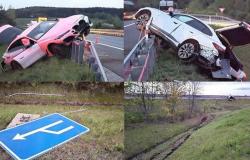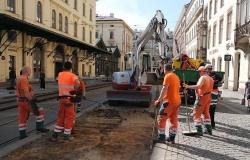The Czech Republic has the most industrial and logistics areas per 1,000 inhabitants of all countries in the Central and Eastern Europe (CEE) region. At the same time, it has the lowest vacancy rate, according to an analysis by the real estate consulting company Cushman & Wakefield.
According to experts from various industries this can prove the attractiveness of the Czech environment for investors, but concrete construction also has a negative impact on the local environment. The opinions of municipalities differ in this regard. On the one hand, according to the Union of Towns and Municipalities (SMO), construction can bring new job opportunities to the area, but at the same time it can reduce local air quality, transport and infrastructure.
The revival of the real estate market can be expected in the second half of next year
Reality
The revival of the Czech real estate market can be expected in the second half of next year. But it will mainly depend on the reduction of interest rates. Experts say that an annual increase in real estate investment of up to 15 percent can be expected. The retail and residential real estate sectors could do the most. On the contrary, the decline in interest will probably be in the market for industrial real estate and also offices, which are now being built in the Czech Republic.
CTK
Read the article
By the end of 2023, the total area of industrial and logistics space in the Central and Eastern Europe region was almost 61.5 million square meters. The Czech Republic accounts for 19 percent of this area, i.e. 11.7 million square meters. According to Cushman & Wakefield’s analysis, the Czech Republic has 1,104 square meters of these areas per 1,000 inhabitants, the most in the entire region.
According to the president of the Association for the Development of the Real Estate Market, Zdenka Klapalová, the Czech Republic was, is and will be an attractive location for the placement of demands related not only to the automotive industry, which dominates the local market. However, he acknowledges that their construction in the Czech Republic must become more efficient and that new areas are not necessarily needed.
“From the point of view of business and investment opportunities associated with growing increased demand, we should continue to focus intensively on ensuring the readiness of new projects. But we don’t always have to build on topsoil with first- or second-class bonito. We can focus on the revitalization of industrial buildings in attractive locations with good accessibility for the workforce and adequate infrastructure,” added Klapalová.
Agreement on soil protection
Eliška Vozníková, the head of the Landscape program in the Duha environmental movement, partially agreed with her in this regard. According to her, the task of the state is to ensure so that the construction of new halls does not take place on the highest quality land, as is the case so far. At the same time, according to her, it is essential that new and existing campuses support innovation and sustainable technologies.
“Soil that is encased in concrete is permanently lost to cultivation, water absorption and any other ecological function. In addition, there is the issue of the external impacts of buildings, which themselves produce emissions and waste and will use current or need new transport routes. It is essential that developers respect the laws, do not try to circumvent them and communicate with local residents,” said Vozníková.
According to SMO, the attitude of Czech cities and municipalities to the construction of industrial parks may differ. According to the spokeswoman of the union Alexandra Kocková, some may see the construction of industrial parks as opportunity to create new jobs, supporting economic development and investment inflows. On the other hand, there are cities and municipalities that may be concerned about the negative impacts of construction and may fear the loss of agricultural land, an increase in the traffic load, or an unbearable burden on local civic amenities.
Total area and vacancy rate of industrial space in CEE countries (fourth quarter 2023, source: Cushman & Wakefield)
| Earth | Total area (in square meters | Occupancy rate (in %) | Share of total areas in CEE (in %) | Area per 1000 inhabitants |
|---|---|---|---|---|
| Czechia | 11,707,500 | 1.8 | 19 | 1104 |
| Poland | 31,695,300 | 7.4 | 52 | 862 |
| Hungary | 5,090,600 | 7.7 | 8 | 522 |
| Slovakia | 3,999,100 | 3.6 | 7 | 735 |
| Romania | 7,003,500 | 4.9 | 11 | 367 |
| Bulgaria (Sofia only) | 1,991,800 | 2.3 | 3 | 287 |
Special Real Estate Club
Realitní Club is a multi-platform project of the newstream.cz server dedicated to real estate, aimed at the B2B and B2C segment. It has three basic parts – web, print and event with a strong focus on social networks. The Realitní Club’s special page was the first to launch. The special is divided into four categories that deal with key areas of the real estate market in a “deep dive” manner.
- Brownfields: the vision and future of undeveloped areas, especially in big cities;
- Commercial real estate: offices, coworking;
- New construction: development, rental housing, cooperative housing, mortgages;
- Reality and politics: how municipalities and the highest levels of central politics participate in construction.
They will be included conversations with developers, politicians, architects and designers.
Topics related to real estate:
Tags: Czech Republic industrial areas inhabitant Central Eastern Europe
-





